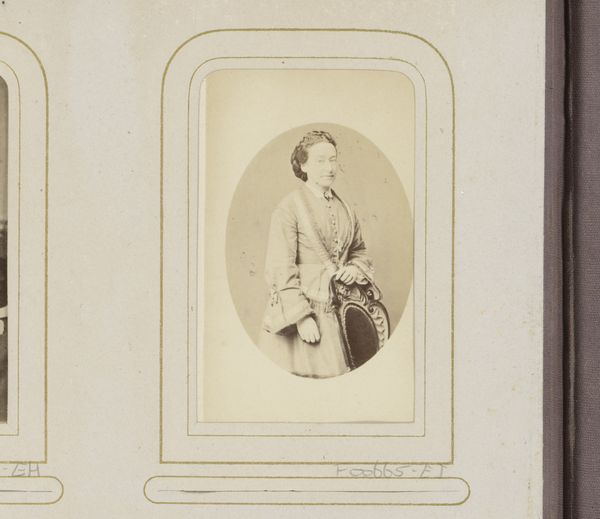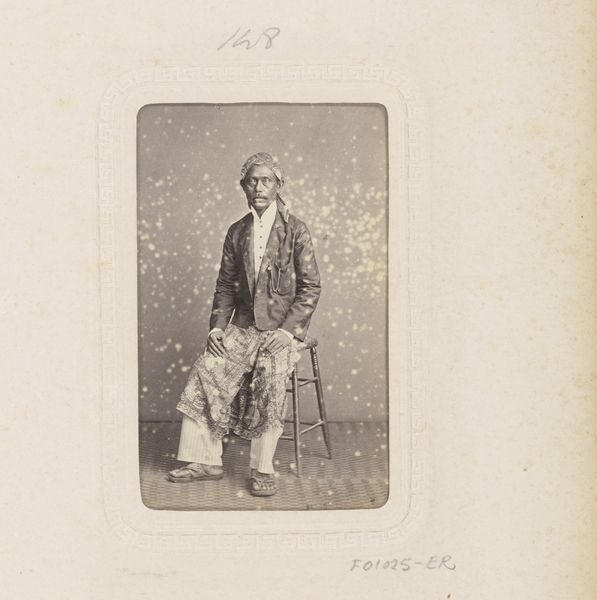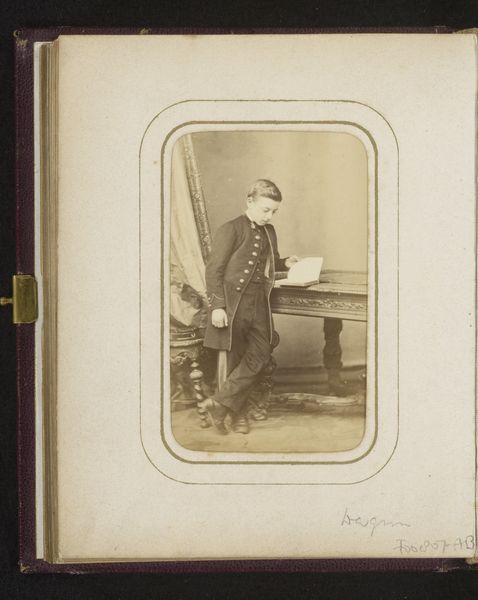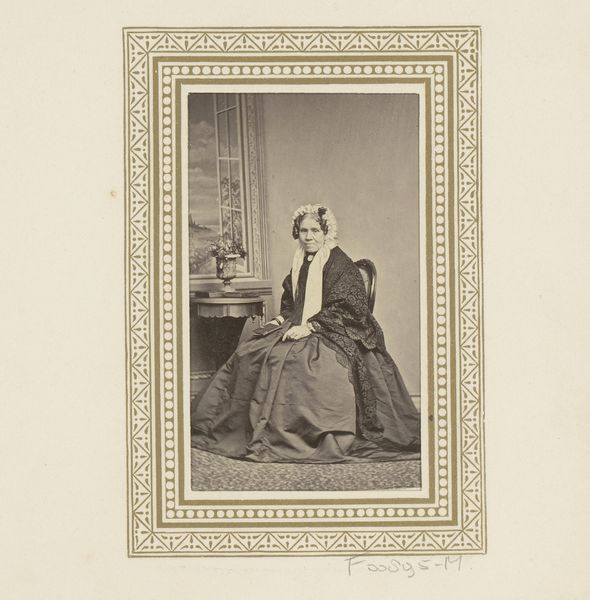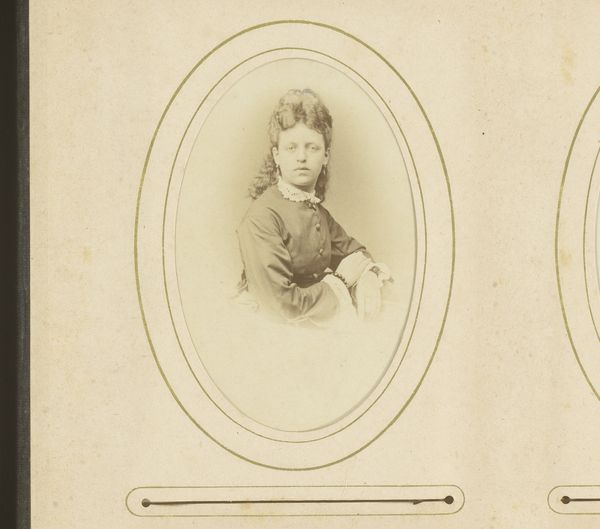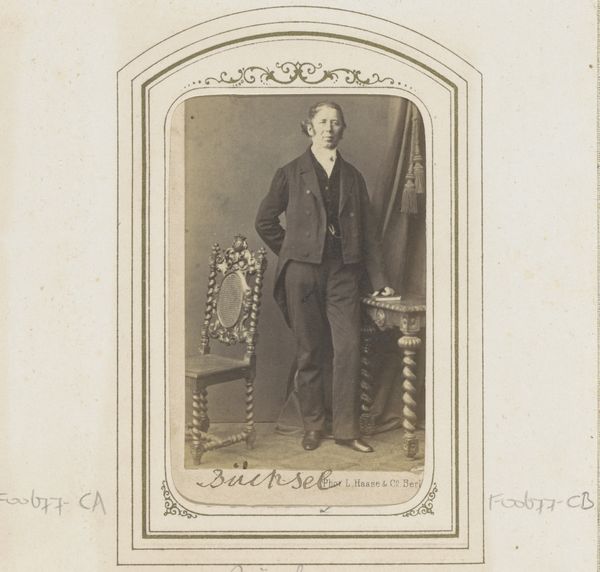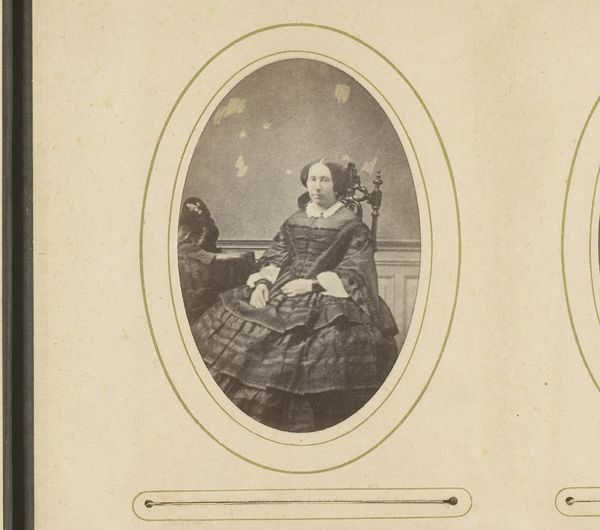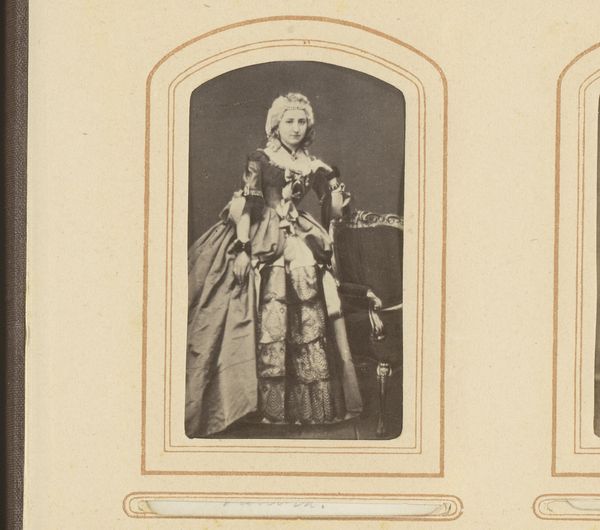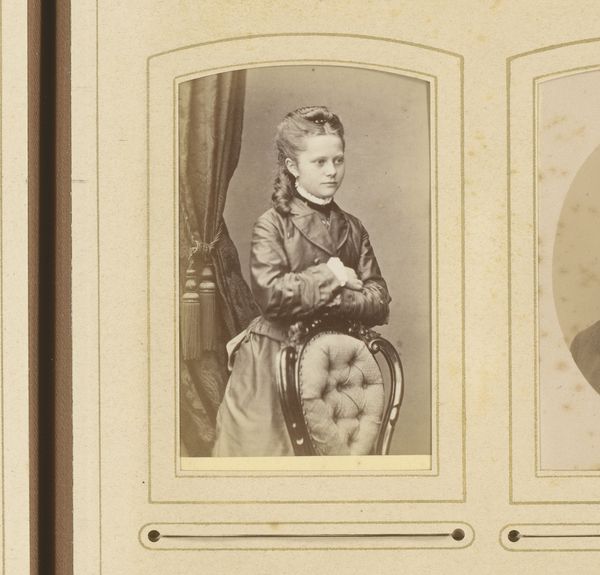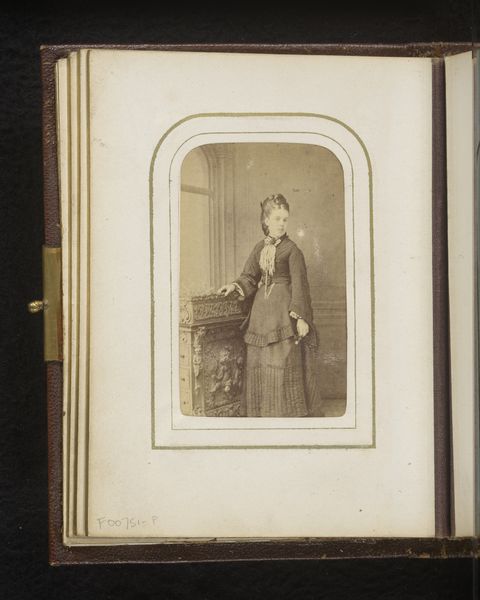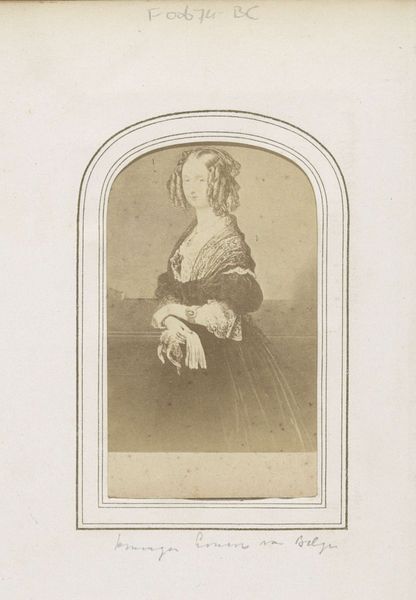
Dimensions: height 82 mm, width 52 mm
Copyright: Rijks Museum: Open Domain
This photograph of a standing girl leaning on a chair was created by Eugene Guérin, using the 19th-century wet collodion process. The process involved coating a glass plate with chemicals, exposing it in a camera while still wet, and then developing it immediately. The method was a cornerstone of early commercial photography, because it made the photographic image reproducible on paper. Wet collodion enabled the mass production of images, transforming photography into an accessible medium, rather than a mysterious science. This speaks to a shift in social practice, since there was once a very limited access to the technologies of representation. The tonal range, and clarity seen here, reflect the skill involved in manipulating the materials and controlling exposure times. Far from being a fully automated technique, wet collodion demanded patience, and close control of the variables involved. Photographs like this were very popular as visiting cards or keepsakes. Paying attention to the means of production helps us to understand photography’s rapid integration into everyday life.
Comments
No comments
Be the first to comment and join the conversation on the ultimate creative platform.
